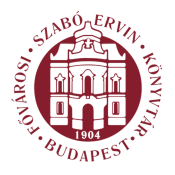Matits Ferenc: Protestant Churches - Our Budapest (Budapest, 2003)
The Lutheran Church of Kelenföld No. 10 Bocskai út, District XI The growing Lutheran population of the emergent Kelenföld-Lágymányos area held their first church service in 1910 in the Bartók Béla út School, an educational institution which still exists today. Headed by parson Gábor Szüts, the Association for the Construction of the Kelenföld Lutheran Church was formed in 1914. The years following the outbreak of World War 1 were a period inauspicious for church-building; the fund-raising campaign stalled, and then the sum of 100 thousand korona collected was thrown away on war-loan bonds. The fund raising was restarted after the war and so was the search for a suitable plot. In 1924 an independent Lutheran Parish of Kelenföld was established. In 1925, the municipality let a 2700-square-yard plot to the Kelenföld congregation for 99 years, gratis. Three designs were made by János Schulek, a professor of architecture and son of Frigyes Schulek (1872-1948), of which a jury convened in 1926 chose the most inexpensive. The foundation stone of the complex was laid on 19 September 1926 and master builder Gyula Medgyasz- szay was commissioned with carrying out the project. Although the construction was supported by the municipality, the Finance Ministry and the Ministry of Public Welfare, the builders were obliged to raise a loan on more than one occasion. In the middle of the complex stands a neo-Romanesque nave church, which was consecrated on 21 October 1928. Set upon a short flight of steps and featuring a gate with orders of arches, the main entrance opens from the base of the middle segment of the three-sectioned main front. Above this there is a row of three larger windows terminating in semicircular vaults followed by one and then two small lancet-style windows breaking through the faqade of the belfry. Beneath the capping of the tower are four larger, double-arched windows segmented by columns and turning towards the four points of the compass. The brick cap is topped with a cross. Joining the tower on two sides are hexagonal turrets. Astride the saddle of the roof sits a ridge turret. A grant of the municipality enabled the congregation to order a bell from the Sopron-based Seltenhoffer company in 1932. The 783-kilo, F-tuned bell was shattered to pieces when it fell to the ground after a shell hit the church in the last months of the war. It was re-cast and put back in its place in 1946; since 1978 it has been sounded by an electric apparatus. The rhythm of the interior proportions is provided by reinforced-concrete vaults to which a wooden ceiling is joined. The church body is divided into five sections by the four vaults. Elevated on a 25
